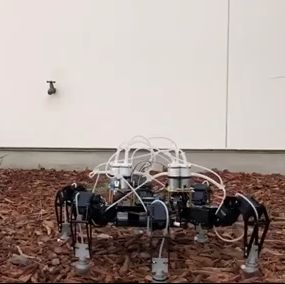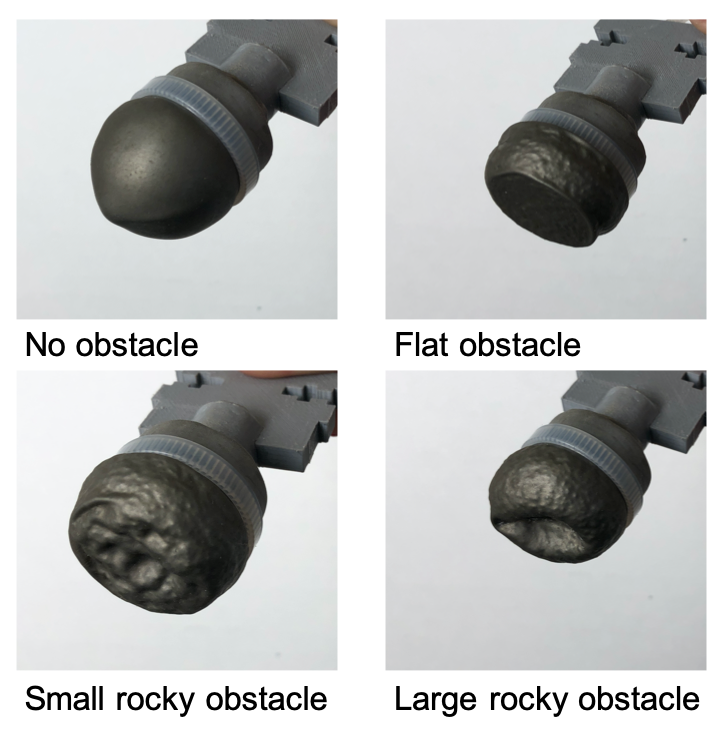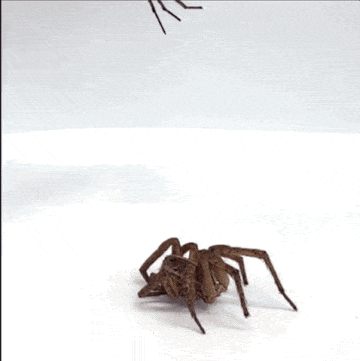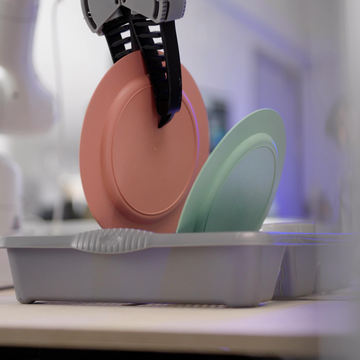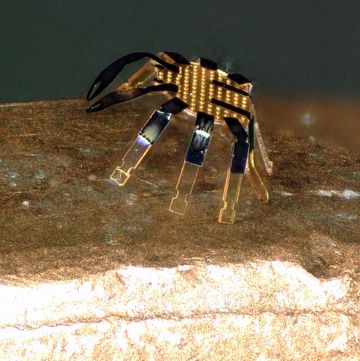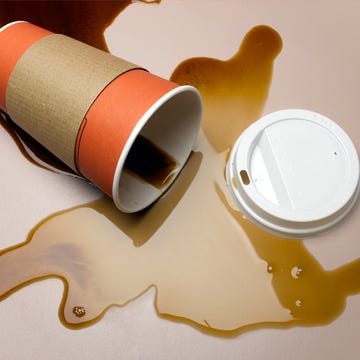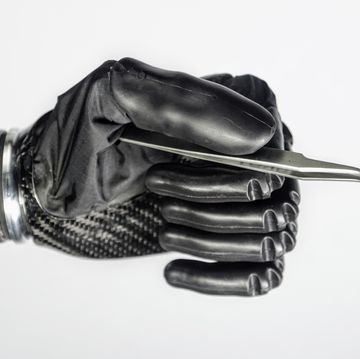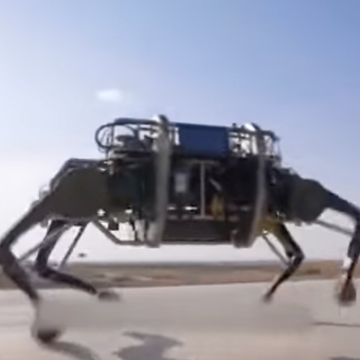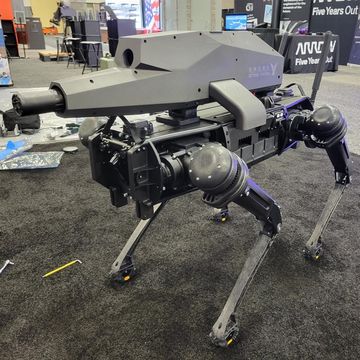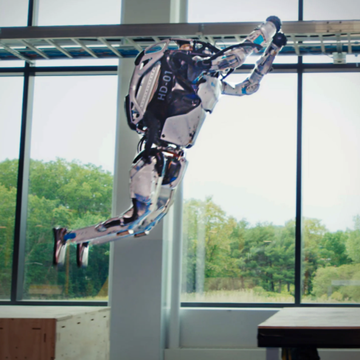- At the University of California San Diego, researchers have created flexible robot "boots" made from latex and coffee grounds.
- These boots use the concept of "granular jamming" to help robots to move up to 40 percent more quickly.
- Search-and-rescue applications could benefit greatly from robots that are able traverse areas humans shouldn't—or can't—go.
Humans take a lot for granted, and the way we walk is no exception. It takes the coordination of over 600 muscles to help us traverse a rock-strewn path or a hill covered in tree roots. But for a robot, walking on unforgiving surfaces—whether a sandy shoreline or a rocky Martian terrain—is a herculean task.
But researchers from University of California San Diego discovered that robots can really kick it into high gear if you outfit them with a set of boots. Using latex and coffee grounds, the team has developed flexible feet that allow a robot to move up to 40 percent more quickly on rough surfaces, including wood chips, pebbles, and hopefully future extraterrestrial surfaces.
"Robots need to be able to walk fast and efficiently on natural, uneven terrain so they can go everywhere humans can go, but maybe shouldn't," Emily Lathrop, lead researcher on the project and an engineering Ph.D. student at UC San Diego, said in a statement. She and her co-researchers will present their forthcoming paper at the RoboSoft conference, which will take place virtually between May 15 and July 15.
To create the boots, Lathrop and company turned to nature for some inspiration. After designing the flexible spheres with a latex membrane, the team filled them with coffee grounds and small structures reminiscent of plant roots. The emphasis on the stuffing is actually key—due to a physics concept known as "granular jamming," the coffee grounds can move back and forth, behaving as both a solid and a liquid.
Jamming occurs when the density of particles increases, which prevents them from flowing. As a result, the material acts like a solid until it un-jams. In this graphic, the arc formation of particles (in red) jam up the other particles. Another example of this phenomenon is in shear stress, which partly explains why your car tires feel like a solid, when they're actually filled with air.
So when the robot's foot meets the ground, the boot can firm up and matches the shape of the ground beneath. As the robot lifts its foot, the boot un-jams before its next contact with the ground. Meanwhile, those root-like structures help to keep the boots stiff while they're jammed.
For testing, the UC San Diego team turned to a commercially available hexapod robot. Then, they built an on-board system to generate negative and positive pressure to help control the jamming. This system works like a vacuum that sucks air out from the coffee grounds to stiffen and loosen the foot.
They tested the boots out on flat ground, wood chips, and pebbles, and in a fourth scenario used no boots to serve as a control. It turns out that with passive jamming—using just the weight of the robot's legs, and no vacuum to suck out the air—the boots performed best on flat ground. With the active jamming intervention, though, the boots performed best on loose rocks. In both cases, the coverings helped the robot grip the ground better, leading to faster locomotion and representing about a 40 percent improvement in speed.
"The natural world is filled with challenging grounds for walking robots—slippery, rocky, and squishy substrates all make walking complicated," Nick Gravish, a professor in the UC San Diego Department of Mechanical and Aerospace Engineering and coauthor on the study, said in the statement. "Feet that can adapt to these different types of ground can help robots improve mobility."
Their next challenge will be to incorporate sensors on the bottom of the feet so that an electronic control board can help identify the type of the ground that the robot is about to step on. That way, they can improve the control algorithms that switch between active and passing jamming.
This is not the first time that roboticists have turned to granular jamming to make improvements to robotic limbs. In 2012, Cornell researchers showed off how ground coffee and party balloons could make perfect grippers to help robots pick up irregularly shaped items.
Coffee grounds and robots—who knew?
